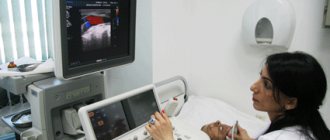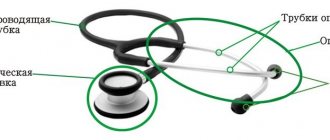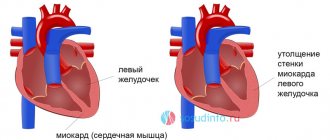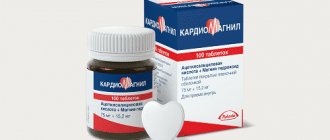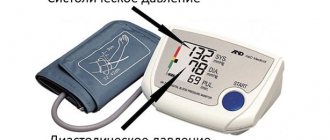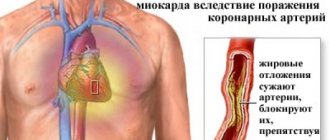The main difference between thrombophlebitis and thrombosis is that they have a different location of the thrombus. Thrombosis is localized in venous vessels located in deep tissues. But thrombophlebitis, on the contrary, affects those venous vessels that are on the surface, near the skin itself. However, both of these diseases present with similar symptoms. Of considerable importance is the individual characteristics of the body and its susceptibility to the process of deterioration of the condition of the vein walls.
The stage at which treatment was started plays a big role. If it is still initial, then it will take less time and medications to eradicate the problem. If the situation is already advanced, in addition to a long period of time and a large list of medications, surgical intervention may be necessary.
The difference between thrombosis and thrombophlebitis lies in the fact that the latter develops only in the affected vein. The onset of the disease always occurs due to an inflammatory process in the vessels, which forms blood clots. But thrombosis can also form in intact veins, where no pathological processes have occurred.
Thrombophlebitis of the lower extremities can be preceded by an inflammatory reaction, which begins due to pathology in the form of dilation of the venous vessels, infection inside the vessel, or if it was damaged due to injury (for example, a catheter was placed incorrectly).
For these reasons, an inflammatory process begins to develop in the vessels, and blood circulation slows down.
Thrombosis is facilitated by disturbances in the cavity of the vessel, blood does not flow well, and so a blood clot begins to appear, which not only prevents it from passing well, but also worsens the condition of the vessel and its functioning.
Doctors take thrombosis much more seriously than thrombophlebitis, because there are no previous symptoms due to the absence of an inflammatory process, and besides, the composition of the blood changes, and this entails the formation of blood clots.
It is known that it is easier to eliminate the inflammatory reaction as a cause of thrombosis than to restore the correct blood composition.
For what reasons do different pathologies arise?
There are no particular differences between diseases, because they arise due to many factors. Therefore, both thrombosis and thrombophlebitis appear due to the fact that the body has:
- blood composition changes;
- blood clots faster;
- varicose veins;
- damage to the walls of the veins;
- slow blood flow.
These consequences are preceded by their causes:
- disruption of the endocrine glands;
- abortion;
- the appearance of malignant tumors;
- chronic diseases of the cardiovascular system;
- infectious diseases;
- disorders in the nervous system;
- if a catheter is installed in one place many times;
- pregnancy, childbirth.
Symptoms: differences in external manifestations
With venous lesions, there are a number of characteristic differences that also make it possible to identify the current disease by its external manifestations. The symptoms of thrombophlebitis and thrombosis are different, and although the most distinct manifestations are observed in advanced stages of the pathological process, knowledge of the manifestations allows a preliminary diagnosis to be made based on subjective manifestations.
Manifestations of thrombosis
For thrombosis, the most characteristic manifestations that can be classified as symptoms of the disease are:
- the appearance of pain even without the presence of external pathological changes in the tissues;
- an increase in the degree of pain during exercise, especially while walking;
- change in the condition of the affected tissues - the limb acquires a shiny surface, the skin is stretched;
- with further aggravation, the affected vein begins to appear and become more noticeable, which acquires a bluish tint, indicating a violation of blood flow.
The pulsation of the arteries in the part affected by thrombosis is absent or invisible.
With thrombosis, the external manifestations of almost all stages of the disease are not very noticeable, which complicates the process of diagnosing the disease. A common characteristic feature of this lesion is some swelling of the tissues.
Symptoms of thrombophlebitis
The first manifestation of this disease is pain in the area of the thrombosed vein. A characteristic feature of pain is its nagging nature, increasing the degree of manifestation in the active state. In this area, there is a clearly visible swelling of the tissues, which acquire an uncharacteristic shade.
Since thrombophlebitis is accompanied by an inflammatory process, manifestations characteristic of inflammation may also be observed:
- deterioration in general health;
- chills;
- muscle weakness;
- a rise in body temperature is likely.
As the disease progresses, there is an increase in characteristic symptoms; it is difficult for the patient to step on the affected leg due to an increase in its pain.
The listed manifestations of thrombosis and thrombophlebitis, their differences and similarities in external symptoms will help with preliminary diagnosis. However, even with minor changes in the well-being and condition of body tissues, you need to consult a doctor who will clarify the preliminary diagnosis and prescribe adequate treatment.
Manifestations of thrombophlebitis
The most striking symptom, noticeable already in the first stages, is that an inflammatory process is occurring. It begins in a damaged vein: only in veins that have been injured can thrombophlebitis begin. At the initial stages, the following manifestations occur:
- the skin turns red where there is a lesion;
- tissues swell;
- the skin begins to turn blue as venous blood stagnates;
- Painful sensations appear if you squeeze the affected tissue.
Description of diseases
The main distinguishing feature of phlebothrombosis and thrombophlebitis is the location of the pathology. Thrombophlebitis is localized in the superficial vein, and phlebothrombosis affects deep venous vessels. Another difference is the condition of the veins. With thrombophlebitis, blockage occurs only in damaged vessels, while with phlebothrombosis, healthy vessels are affected.
Vein pathologies can develop due to varicose veins, mechanical damage, infection and other factors. In any case, the blood flow through the vessels slows down, which causes their inflammation and the formation of clots (thrombi).
It is phlebothrombosis that is the most dangerous vascular pathology, since the formation of blood clots occurs due to changes in the coagulation properties of the blood, and not as a result of their damage, as occurs with thrombophlebitis.
The difference between phlebothrombosis and thrombophlebitis is that with the first pathology, the disorder manifests itself in a healthy vein. This means that the symptoms are weak or completely absent.
Table of disease differences
| Main differences | Thrombosis | Thrombophlebitis |
| in which vessels do they appear? | in healthy veins | in the affected veins |
| reasons for occurrence | pathological changes in blood composition, increased coagulability, varicose veins, slow blood flow | |
| symptoms | inflammatory process in the veins, heaviness in the legs, swelling of the lower extremities, the skin becomes more sensitive | health worsens, weakness, chills, headaches, body temperature rises |
First, medications are injected into the blood to thin the blood so that the clot stops growing. When the doctor performs a duplex scan, he will decide whether the patient needs to be operated on or not. It happens that urgent surgery is indispensable, but in other cases the inflammation is first removed. Most often they do without surgery.
Main symptoms and signs
The main symptom of phlebothrombosis is sudden flaring pain in the affected limb. The pain is not constant, but is aggravated by stress on the legs (walking, lifting weights, standing for long periods of time).
Next, tissue swelling occurs. There is a feeling of heaviness and swelling of the leg. The skin around the thrombosed area of the vein is cyanotic (bluish), very stretched, and shiny. Dilated tense veins become noticeable a few days after the formation of a blood clot.
The temperature of the limb increases by 1.5-2 degrees. There may be an increase in overall body temperature. The pulsation of the arteries of the diseased limb may not be disturbed, but most often it is felt weakly or completely absent.
In case of thrombosis of the calf veins or only the deep veins, the clinical picture of the disease is erased. In such cases, the only symptom of the resulting pathology is slight swelling in the ankle joint and pain in the calf muscle that occurs during physical exertion.
In acute thrombophlebitis of the superficial veins, the first symptoms are nagging pain. The pain is localized in the area of the thrombosed area of the blood vessel. The affected vein is compacted and protrudes above the surface of the skin. In contrast to thrombosis, arterial pulsation and limb temperature remain normal.
Swelling of the sore leg is observed, motor functions are difficult. Along the course of the thrombosed vein, swelling, infiltration, and hyperemia of the soft tissues are observed. The skin takes on a bluish tint. Varicose veins are tense, and severe pain occurs when palpating the affected areas.
Specific signs of thrombophlebitis are often accompanied by inflammatory symptoms:
- 1. deterioration in health;
- 2. general weakness;
- 3. chills;
- 4. headache;
- 5. increase in body temperature (in severe cases up to 39 degrees).
Deep vein thrombophlebitis is manifested by uniform swelling of the foot and lower leg. The pain is dull, sharply intensifies when pressing the calf muscle, when bending the foot. The patient may have difficulty walking. Sometimes the pain is so severe that a person cannot walk.
If any of the above symptoms appear, you should definitely consult a phlebologist. Undergo a medical examination and, if thrombophlebitis or thrombosis is detected, immediately begin adequate treatment under the guidance of a doctor.
Thrombophlebitis and thrombosis can be distinguished by the location of the affected area. The development of thrombophlebitis occurs in veins running directly under the skin, and thrombosis usually occurs in deep venous vessels.
With the development of thrombophlebitis, blood clots appear in deformed veins, and thrombosis can occur in any venous vessel that does not have any changes.
Thrombophlebitis and phlebothrombosis appear on the walls of deep veins. But the first can also develop on a superficial vein, and the second appears only on the walls of deep veins.
Thrombophlebitis appears with varicose veins, with damage to the venous wall, when there is a violation of the outflow of blood plasma from the limb, and a slowdown in blood circulation. In this case, a blood clot forms, closing the lumen in the vein.
Phlebothrombosis occurs in a non-inflamed, deep-lying venous canal while the vein itself remains unchanged. A thrombus with a loose structure forms on the wall of the vessel. It comes off easily and can move with the bloodstream, leading to the development of thromboembolism. If the vein is varicose, then thrombophlebitis may appear along with phlebothrombosis. The first gives full symptoms of the lesion, and the second proceeds without any symptoms.
Typically, pathological changes in the venous channels begin to develop due to varicose veins themselves, damage to the internal walls of blood vessels due to various injuries, the development of infection and many other reasons. All this slows down blood circulation in the venous channels, and stagnation leads to inflammatory processes. Blood clots appear, which quickly harden, forming blood clots. This leads to complete stagnation of blood, inflammation of the soft tissues of the legs or arms.
Unlike thrombophlebitis, thrombosis is considered more dangerous, since with it blood clots can develop due to the slightest damage to the vein. And phlebothrombosis with thrombophlebitis appears due to changes in the properties of the blood itself.
Thrombosis can develop in non-inflamed venous vessels, and the appearance of thrombophlebitis is almost always associated with varicose veins. With thrombosis, the symptoms of the disease are not as pronounced as they are with the appearance of thrombophlebitis, which is much easier to identify, since it occurs with noticeable inflammatory processes at the local and general levels.
Treatment of thrombophlebitis
Treatment is often carried out on an outpatient basis. If there is a risk that the inflammation will spread to the deep veins, then surgery will be prescribed. No matter how strange it may sound, the patient is not allowed to lead a sedentary lifestyle in order for the muscular-venous pump located in the lower leg to work. It is she who ensures blood flow in the veins. At the onset of the disease, elastic bandages should be applied. Cold compresses help relieve pain. Drug treatment is also prescribed.
A disease such as thrombophlebitis means not only the formation of a venous thrombus, but also the development of inflammation in the vascular wall. The disease can affect both the upper and lower extremities.
The disease can develop in any person, regardless of gender and age. However, older people are more susceptible to thrombophlebitis. Pathology is often diagnosed in pregnant women and is caused by physiological changes in the body during gestation.
The disease can occur in acute and chronic forms . According to statistics, every representative of the strong and every representative of the weak half of society over 40 years old suffers from the disease.
Often the disease is treated with surgery. In addition, treatment of the disease consists of following a diet, doing gymnastics, and using medications and ointments.
Conservative therapy is carried out in the initial stages.
Ignoring the symptoms of pathology is fraught with blockage of the lumen, septic complications, and breakage of a blood clot, leading to such a serious illness as deep vein thrombosis or embolism of the branches of the pulmonary artery.
It is strictly not recommended to self-medicate, in particular to use compresses, treatment with leeches, as well as natural ingredients such as mumiyo and medicinal herbs without the knowledge of a doctor. Shilajit helps against varicose veins, but it can only be used as an additional therapy and only with the permission of a doctor.
Europeans are several times more likely to experience this disease than residents of Asia. This is due to the habit of Asians to sit on a mat rather than on a chair. At the same time, blood flow in the lower extremities is much better.
Causes of the disease
The causes of phlebothrombosis can be divided into three groups (the so-called Virchow triad):
- Damage to the venous wall (without its rupture). In this case, the body activates a mechanism that inhibits bleeding. As a result, the volume of platelets increases sharply, and prostacyclin (which prevents platelets from connecting to each other), on the contrary, becomes less. Blood clots easily form in altered blood composition.
- Blood clotting disorder (thrombophilia). It is also possible to reduce the activity of factors that counteract coagulation (hypercoagulation). The pathological process can be started both under the influence of external factors and as a result of malfunctions in the body itself (for example, in the case of excess adrenaline).
- Disturbance in the nature of blood flow. Too slow blood flow, just like turbulent blood flow, provokes the formation of blood clots.
Any of the above reasons is sufficient for the development of thrombosis. All other reasons are secondary, but may have additional predisposing significance. Among the secondary causes of thrombosis are the following:
- genetic predisposition;
- autoimmune diseases;
- oncological diseases;
- long period of immobilization (bed rest, sedentary work, constant flights in an uncomfortable position);
- injuries (surgical interventions, bruises, fractures);
- bad habits (drugs, alcohol, tobacco).
What is thrombophlebitis: pathogenesis, types, main signs
You already know what thrombophlebitis is.
There are several types of pathology. According to the nature of the disease, it can be acute, subacute and chronic. According to the localization of the inflammatory process or blood clot - deep and superficial. Thrombophlebitis of the upper and lower extremities, as well as purulent thrombophlebitis are also isolated. Thrombophlebitis of hemorrhoidal veins of the anus is often diagnosed.
The occurrence of thrombophlebitis of the superficial veins of the upper and lower extremities can be caused by: a sharp increase in blood clotting, pregnancy, childbirth, diabetes, injury, blockage of the lumen, slowdown of blood flow, unsuccessful injection and even an insect bite.
The first signs appear quickly. The appearance of strong translucency of the vein and its acquisition of a purple hue and acute pain are noted. The vein itself is dense.
Inflammation of the lower leg with thrombophlebitis, as well as in the lower third of the thighs, causes an acute form of the pathology.
The main signs of thrombophlebitis of the superficial veins include:
- pain along the vein;
- swelling;
- increase in temperature.
If we talk about deep vein thrombophlebitis, the disease develops in the lower leg or thigh. A characteristic symptom of the disease is Moses syndrome (the appearance of severe pain when pressing on the ankle from the front and back). In addition, the pathology is characterized by bluish skin, appearance of a venous network on the abdomen, lower leg and thigh, pain when turning the foot inward, and an increase in temperature.
Knowing what thrombophlebitis is, knowing its signs and main symptoms, you can prevent the development of complications. However, you should not prescribe treatment on your own, even if you are knowledgeable about the issue and know what thrombophlebitis is and how it manifests itself. Inappropriate use of medications, in particular painkillers, antibiotics, herbal remedies, wearing compression stockings - all this can cause complications.
Regardless of the location of the pathology (pelvic, femoral area), and even more so if you do not know how it manifests itself and what thrombophlebitis is, if suspicious symptoms appear, ulcers form, or excessively bulging veins, contact a medical facility.
Symptoms
Symptoms of phlebothrombosis are most often mild. This is caused by the fact that vessels located deep in the lower extremities are affected.
To identify the disease, a system of tests is used:
- Homans' sign. Using this test, you can evaluate the patency of the deep veins in the lower leg. For examination purposes, the patient lies on his back, bends his knees and then bends his ankle dorsally. If pain occurs in the calf muscle area, the test for the symptom is positive.
- Payra's symptom. To carry out the test, the dorsum of the ankle is palpated. Pain on palpation indicates a positive test result.
- Lowenberg's sign. A cuff of a special device, a sphygmomanometer, is placed on the lower leg. Next, air is pumped into the cuff to a level of 60-150 millimeters of mercury. If pain occurs, the symptom test is positive.
- Pratt's sign. A positive result for the symptom is noted in the case of obvious manifestation of the venous network on the lower limb.
- Sperling's sign. The test is positive if the skin is pale with a bluish tint.
There are a number of additional secondary signs of phlebothrombosis:
- increased fatigue;
- heart rhythm disturbances, tachycardia;
- increase in body temperature to 39-40 degrees;
- increased local temperature in certain areas of the lower extremities;
- pulling, bursting pain (usually becomes more intense in an upright position of the body).
Symptoms of thrombophlebitis and complications
Symptoms of thrombophlebitis can appear either immediately or after some time. Manifestations will differ slightly depending on the location of the affected vein (pelvic, femoral, iliac, pulmonary).
The disease is characterized by:
- intense pain along the vein in the arm or leg;
- thickening of the vein;
- swelling;
- hyperemia;
- increase in temperature;
- impaired mobility;
- chills;
- malaise;
- decreased performance;
- rapid fatigue.
If the above symptoms of thrombophlebitis appear, contact the hospital immediately. Otherwise, you risk developing complications.
The danger of the pathology lies in the localization of the inflammatory process and blood clot. Superficial veins suffer more often, since thrombophlebitis is a complication of varicose veins. Treatment for this disease is usually medication.
But thrombophlebitis of the deep veins due to insufficient blood flow is fraught with the development of venous gangrene, pulmonary embolism, as well as death. Treatment for this condition should be immediate.
The above symptoms of thrombophlebitis, or rather their appearance, are a serious reason to go to the hospital. Remember that ignoring the symptoms of thrombophlebitis can cause disastrous consequences.
Reasons for development
The etiology of these two diseases is the same. The formation of a blood clot occurs as a result of many factors and in most cases develops against the background of disorders:
- Phlebeurysm;
- Pathology of blood flow through the veins;
- Injury to the walls of blood vessels;
- Deviation from the norm of blood composition;
- Reducing the speed of blood flow.
Such changes in blood vessels can be caused by a number of factors affecting the body. These include:
- Disturbances of the endocrine system;
- Active growth of malignant neoplasms;
- Chronic form of vascular diseases;
- Infectious processes in the body;
- Blood composition disorders;
- Errors in injections, suggesting injury to the vein;
- Disorders of the nervous system;
- Frequent placement of the catheter in the same area;
- Surgery affecting the pelvic and abdominal areas;
- Pregnancy and childbirth;
- Artificial termination of pregnancy;
- Hormonal imbalance;
- Poor nutrition or strict diets;
- Metabolic disorder.
Those vessels that bear the greatest load are susceptible to thrombophlebitis. Therefore, most often the lower extremities suffer from this disease, which bear the entire load of the body, especially if the person is constantly in motion or lifts weights.
Not only excess, but also lack of movement causes the development of thrombosis. The optimal solution is moderate physical activity.
How to treat thrombophlebitis, what ointment to use for inflammation of the veins and other remedies
Only a doctor knows how to treat thrombophlebitis.
Ointments for inflammation of the veins are a good option, but their use should only be prescribed by a specialist.
Treatment of thrombophlebitis depends on the stage of the pathology.
Ointments for inflammation of the walls of blood vessels are also prescribed depending on the shape and degree of damage to the vein and the size of the blood clot.
As a rule, the use of the following effective and efficient gels and ointments is prescribed:
- Heparin ointment - applied to the dermis three times a day. The product has powerful decongestant and anti-inflammatory properties, and also helps prevent the formation of blood clots.
- Essaven-gel - used three times a day. The product helps improve blood circulation, resolve blood clots, and has an anti-inflammatory effect.
- Ketonal cream 5% - the composition must be applied twice a day. Helps minimize pain, eliminate swelling and inflammation, as well as heal wounds (if any).
- Lyoton gel - applied in a thin layer three times a day. The gel helps eliminate inflammation and fatigue, as well as reduce blood clotting.
Treatment
When phlebothrombosis is diagnosed, complex treatment is prescribed. Conservative methods include taking medications and performing special procedures. Namely:
- Taking anticoagulants normalizes blood viscosity.
- Antiplatelet agents minimize the creation of clots and blood clots.
- Phlebotonics improve blood flow and normalize vascular tone.
- Immobilization helps keep the affected limb in one position.
- Compression with elastic bandages is necessary during the recovery phase.
- A diet containing a minimum amount of cholesterol.
Depending on the severity of the disease, surgical treatment may be prescribed. It consists of excision of the vein and removal of its damaged area.
If thrombophlebitis is diagnosed, complex therapy is also prescribed, consisting of the following procedures and medications:
- Fixation of the injured limb using a Beller splint.
- Compression clothing, as well as fixing the foot with elastic bandages.
- Anticoagulant drugs.
- Anti-inflammatory drugs.
- A small amount of glucocorticoids.
Thrombophlebitis and phlebothrombosis are treatable. A favorable outcome is most likely if the pathology is detected in a timely manner. And attention to your health plays an important role in this case.
Thrombophlebitis and phlebothrombosis are often considered synonyms, names of the same disease. Actually this is not true. Despite their somewhat similar etiology, these are different pathologies. So what is the difference between thrombosis and thrombophlebitis? What factors influence their development? What are the symptoms of venous damage in the first and second cases?
What is venous thrombosis and how does thrombosis differ from thrombophlebitis?
People often perceive thrombosis and thrombophlebitis as one disease. In fact, these pathologies are different. Let's clarify what venous thrombosis is and how it differs from thrombophlebitis.
The localization of the blood clot is the main sign thanks to which the doctor can distinguish one disease from another. Thrombophlebitis is accompanied by damage to the venous vessels that are located near the skin. Thrombosis, in turn, is characterized by the involvement in the process of venous vessels located deep in the tissue.
In addition, the characteristic difference between the ailments is determined by the condition of the vessel at the time of its damage.
The development of thrombophlebitis is always caused by damage to the vein wall. As for thrombosis, it can occur in a completely intact vein wall.
Another difference is the less severe symptoms of thrombosis and, therefore, later diagnosis and more complex therapy. Thrombophlebitis has pronounced symptoms and is quickly diagnosed. You can find out what thrombosis is and how thrombosis differs from thrombophlebitis from your doctor.
The symptoms of these diseases are also different. So, for example, thrombophlebitis is accompanied by pronounced manifestations: cyanosis of the dermis, increased temperature, hyperemia, pain, swelling, induration. As for thrombosis, it is characterized only by mild swelling and mild pain.
Thrombosis, unlike thrombophlebitis, is never accompanied by chills, malaise, deterioration in general health, causeless headaches, or increased temperature. Now, you know what venous thrombosis is and how thrombosis differs from thrombophlebitis.
The differences between thrombosis and thrombophlebitis are actually significant. In any case, if symptoms appear, you should seek medical help.
Only he knows how to remove blood clots in a vein. Remember, the earlier the pathology is identified, the more successful the therapy will be and the fewer complications there will be.
No special signs have been identified in the treatment of the pathology that clearly indicate the difference between thrombosis and thrombophlebitis. Therefore, as a rule, for the treatment of thrombosis and thrombophlebitis, the use of blood thinners, painkillers, and NSAIDs is prescribed.
Surely many have heard about such a life-threatening condition as pulmonary artery thrombosis (PE). The person suddenly begins to choke, turns blue before his eyes and quickly loses consciousness. Often he dies before emergency care can be provided to him.
The reason for this condition is a thrombus - a small blood clot that forms in the peripheral veins, suddenly enters the systemic circulation and clogs the lumen of the pulmonary trunk. There is a particularly high risk of developing pulmonary embolism in patients with a tendency to increased thrombosis and chronic venous diseases. What is the difference between thrombosis and thrombophlebitis, which pathology is more dangerous, and why: we will look at it in our review and video in this article.
Phlebothrombosis and thrombophlebitis are two different pathologies
How does thrombosis differ from thrombophlebitis clinically? Superficial thrombophlebitis can be suspected when pain and swelling appears along the veins located directly under the skin. The pain can range from mild discomfort to severe cramp-like pain, increase gradually, or occur suddenly. As a rule, such symptoms persist for one to two weeks, after which they subside, and “lumps” of compaction appear along the veins.
Thrombophlebitis of the superficial veins If you notice the first signs of a blood clot, you can prevent a catastrophe. What are the symptoms if a blood clot is in the arm, leg, head, heart? What are the signs of a mass that has come off? What is a blood clot and what substances are involved in its formation?
- Deep vein thrombosis often poses a serious threat to life. Acute thrombosis requires immediate treatment. Symptoms in the lower extremities, especially the lower legs, may not be immediately diagnosed. Surgery is also not always required.
- Varicose veins and thrombovlebitis are so similar, it is not so easy for the average person to understand the difference between them. What signs and symptoms can help you differentiate between them?
- Mainly due to prolonged stay in one position, ileofemoral thrombosis can occur. Symptoms are cyanosis, bulging veins, numbness of the leg, etc. Diagnosis is based on ultrasound, CT. Treatment of acute venous thrombosis begins with the installation of vena cava filters and diluting drugs.
The list of diseases that affect the vascular lines of the lower extremities is not so long. The most common among them are varicose veins and thrombotic lesions of the veins of the lower extremities. Very often people think that varicose veins and thrombophlebitis are the same thing, but this belief is completely wrong. Also, due to the similarity in terminology, there is a misconception among the population about the identity of the latter with such pathological conditions as thrombosis and phlebitis. Misunderstanding of the difference between these diseases can lead to underestimation of the existing threat when pathological mechanisms are triggered, untimely seeking medical help and, as a result, the development of extremely severe complications in the patient that threaten not only his health, but also his life.
How does a blood clot form?
Before understanding the question of what thrombosis and thrombophlebitis are, and what are the differences between them, it is important to touch upon the mechanism of thrombosis. A blood clot is nothing more than one of the ways of adaptation and protection. If nature had not provided for the mechanism of hemostasis (blood clotting), a person would die from even the simplest scratch, which would cause continuous bleeding.
Unfortunately, blood clots are not always beneficial. There are situations when the coagulation processes are disrupted and the blood becomes too viscous.
Among their main reasons are:
- age over 65 years;
- genetic predisposition;
- sedentary lifestyle;
- excess weight;
- pregnancy;
- taking combined oral contraceptives containing high doses of estrogens;
- chronic venous diseases;
- weightlifting, professional sports;
- long driving;
- frequent intravenous injections.
This is interesting. According to research by American doctors, a blood clot forms in the veins of the legs in at least one passenger on every flight. This is due to frequent changes in atmospheric pressure, uncomfortable positions that people have to take, and dry air in the aircraft cabin.
The mechanism of thrombus formation is quite complex and consists of three mandatory components. Each of them is described in detail in the table below.
Table: Virchow's triad - processes involved in the formation of a blood clot
| Pathological process | Description |
The process of thrombosis is activated. | |
| The activity of the coagulation system increases due to increased concentration: The effect of the anticoagulant system becomes less pronounced (mainly due to the suppression of fibrinolytic activity). ICVD (intravascular blood coagulation) and thrombosis develop. | |
| A decrease in blood flow speed promotes platelet aggregation and triggers the process of cellular and plasma thrombus formation - platelet aggregation and fibrin synthesis, which represents the bulk of the thrombus. |
Symptoms of various vein lesions
Thrombosis differs from thrombophlebitis and phlebothrombosis in its symptoms. With the last two ailments, the patient develops pain at the site of the lesion on the limb. But it is not constant, although it can sharply intensify when walking, standing for a long time or lifting weights. After this, swelling in the tissues and heaviness in the legs may appear. The skin around the area affected by the blood clot turns blue, becomes very stretched, and gives off an unnatural shine. Tense and dilated veins can be seen 3-4 days after blood clots form.
The skin temperature on your feet may increase by two degrees. In some patients, this causes a general rise in body temperature. The pulsation of the artery in the affected leg may be weakened or absent altogether.
If thrombosis of the deep veins or calf vessels begins, the symptoms are usually erased, since in most cases the sign of the disease is a slight swelling in the ankle joint and slight pain in the calves during physical exertion.
Acute thrombophlebitis on the superficial veins gives a nagging pain, which is localized at the site of development of the blood clot itself. The diseased vein thickens and begins to appear above the surface of the skin. In this case, the pulsation in the arteries of the leg does not disappear, as happens with thrombosis. It is difficult for the patient to move his leg; swelling is observed on the limb. Swelling appears along the affected vein. There is noticeable hyperemia in the soft tissues and infiltration. The skin at the location of the blood clot turns blue. With varicose veins, they become very tense. When palpating the affected area, the patient feels severe pain.
Thrombophlebitis is accompanied by the following signs of inflammation: the patient begins to feel a sharp deterioration in health, he complains of general weakness, pain in the head, and is tormented by chills. A significant increase in temperature is possible - up to 38-40ºС.
With the development of thrombophlebitis in the deep veins, uniform swelling is observed on the lower leg and foot. The pain is dull in nature. It can sharply intensify when pressing on the calves or the bend of the foot. It is difficult for the patient to walk, and at some periods of time the pain intensifies so much that the person cannot step on his foot.
If at least one of the above symptoms occurs, you should seek help from a doctor of the appropriate specialty (phlebologist).
The patient will undergo a medical examination and, if any of the described vein diseases are present, treatment will begin. It is better not to self-medicate due to possible complications.
State budgetary educational institution
higher professional education
Ministry of Health and Social Development
Russian Federation
Department of Surgical Diseases
Methodological development for clinical practical training of the discipline
"SURGICAL DISEASES"
for students of the Faculty of Pediatrics
TOPIC: Thrombophlebitis, phlebothrombosis. Postthrombophlebitic syndrome.
Tver – 2012
Compiled by:
Edited by the Head of the Department of Surgical Diseases, Doctor of Medical Sciences. N.A. Sergeeva
Reviewer: Head of the Department of General Surgery, Professor E.M. Mokhov
"___" __________2012
I. Study topic number: No. 18
II. Title of the educational topic: “Thrombophlebitis, phlebothrombosis. Postthrombophlebitic syndrome"
III. The purpose of studying the educational topic :
Based on knowledge of the anatomy and physiology of the venous system of the lower extremities, etiology, pathogenesis and clinical picture of acute thrombophlebitis and postthrombophlebitis syndrome (PTPS), the student must master the methodology for examining patients with this pathology, methods for diagnosing the disease, making a differential diagnosis and prescribing treatment for various stages of the thrombotic process .
IV. Key terms:
- The structure of the venous wall.
The nature of intravascular thrombus formation.
3. Thrombophlebitis.
4. Phlebothrombosis.
- Postthrombophlebitic syndrome of the lower extremities.
V. Topic study plan:
- Social significance of the topic.
The concept of thrombophlebitis.
The concept of phlebothrombosis.
Anatomical features and patterns of blood circulation in the system of superficial, deep and communicating veins.
The nature of intravascular thrombus formation: changes in the vascular wall.
Classification of acute thrombophlebitis.
Clinic of acute thrombophlebitis.
Research methods.
Diagnosis of acute thrombophlebitis.
Treatment of acute thrombophlebitis.
VI. Presentation of educational material
What diseases cause pathological blood clots?
One of the most common vascular diseases associated with increased thrombus formation are thrombosis and thrombophlebitis of the lower extremities. How are they different?
Characteristics of thrombosis
Thrombosis is an acute condition associated with the formation of a blood clot in the lumen of a vessel, which completely or partially disrupts blood flow in the affected area. If we talk about phlebothrombosis, this disease usually means the formation of a blood clot in the veins of the lower extremities (usually the lower leg).
Typical causes of the condition include:
- varicose veins;
- the need to remain in bed for a long time;
- prolonged compression;
- oncological diseases;
- liver pathology;
- various metabolic disorders.
Symptoms of the disease appear suddenly, but are not severe enough.
Therefore, many simply do not attach importance to them. Patients are concerned about:
- discomfort, a feeling of fullness, painful sensations in the leg, which intensify with physical activity (walking, climbing stairs) and prolonged standing;
- heaviness in the affected limb;
- edema;
- redness or slight bluishness, smooth surface of the skin over the lesion;
- paleness of the skin below the level of blood clot formation.
1-2 days after the blockage has occurred, dilated superficial veins clearly stand out above the surface of the skin.
Important! Only in 50% of patients the clinical course of thrombosis follows the classical scenario. Unfortunately, in half of the cases thrombosis manifests itself as pulmonary embolism.
The development of thrombosis can be suspected using the following diagnostic tests:
- Appearance/increasing pain when dorsiflexing the foot.
- The appearance of painful sensations when applying pressure using a tonometer cuff attached to the lower leg. Discomfort on the affected limb begins already at 80-100 mmHg. Art., whereas on a healthy limb - no earlier than 150-170 mm Hg. Art.
Characteristics of thrombophlebitis
What is the difference between thrombophlebitis and thrombosis? Thrombophlebitis is also a condition in which a blood clot forms on the venous wall, but this pathology occurs against the background of inflammation of the vessel - phlebitis.
The following factors play a role in the development of the disease:
- varicose veins;
- acute/chronic infection;
- genetic or acquired predisposition to thrombosis in coagulopathies, thrombophilia;
- violations of the rheological properties of blood;
- trauma and microdamage to the vascular wall.
Note! Sometimes thrombophlebitis complicates the course of natural childbirth, operations, infectious diseases, and oncopathology.
The pathology can affect the superficial and deep veins of the lower extremities, less often the portal, superior and inferior hollow, and hepatic vessels.
Acute thrombophlebitis is characterized by the appearance of the following symptoms:
- swelling of the affected limb;
- intense acute pain along the affected vein;
- feeling of burning, heaviness, swelling in the leg;
- expansion of the network of superficial vessels of the leg, determined visually;
- redness and local hyperemia of the skin over the inflamed area.
Without treatment, the skin turns pale and then turns purple. It is possible that general symptoms of intoxication may occur – weakness, headache, fatigue.
The risk of complications increases:
- gangrenous, ischemic form of inflammation of the vascular wall;
- white or blue phlegmasia;
- thromboembolism.
Important! At the first symptoms of the disease, it is necessary to place the patient in a horizontal position and call an ambulance. Until a person with thrombophlebitis is examined by a doctor, various medications (ointments, gels, rubs) cannot be used, as this can cause a blood clot to break off.
Varicose veins and thrombophlebitis: differences
The causes and symptoms in the initial stages of development of thrombophlebitis of the lower extremities and varicose veins are quite similar. For each of these pathological conditions, the main development factors are genetic predisposition, hormonal imbalance, increased load on the lower extremities, and lack of activity. In the compensation stage, both pathologies are manifested by the occurrence of increased fatigue and the formation of unstable edema in the lower legs, which disappear on their own after a short rest of the patient. As you can see in the photo below, varicose veins and thrombophlebitis are very similar in external manifestations.
Then what is the difference between varicose veins and thrombophlebitis? First of all, in the pathological mechanisms that underlie these diseases. What is the difference between varicose veins and thrombophlebitis? A decrease in the functionality of the valvular apparatus of the veins and an abnormal expansion of their lumen occurs as a result of destructive changes in the vessels that are formed under the influence of unfavorable factors. However, the pathological process is accompanied only by symptoms, manifested by impaired blood circulation in the venous line and trophism of the soft tissues surrounding the affected vessel. There are no signs of inflammation, either local or general. In the absence of specific treatment, a complication of varicose veins is thrombophlebitis.
Varicose thrombophlebitis develops against the background of inflammation of the walls of blood vessels as a result of the entry of a pathogenic agent into the affected areas of the vein. With thrombophlebitis, varicose veins are aggravated by a violation of the rheological properties of the blood and the formation of clots of various sizes in their lumen.
How to distinguish thrombophlebitis from varicose veins? Differential diagnosis in this case does not cause difficulties, since thrombophlebitis of varicose nodes causes the appearance of a characteristic clinical picture. There is a sharp increase in general body temperature and locally over the area of the pathological focus. The affected vein is tense, sharply painful, accompanied by intense hyperemia of nearby tissues, while varicose veins do not cause redness of the skin. When it becomes necessary to differentiate thrombophlebitis and varicose veins, differences in the patient’s complaints help to cope with this task with ease. Any of these diseases requires mandatory therapy.
Treatment of varicose veins, thrombophlebitis
Treatment of varicose veins and thrombophlebitis involves an integrated approach, however, there are certain differences in eliminating the diseases. Treatment of varicose thrombophlebitis is a longer and more complex process, since in this case it is necessary not only to reduce the manifestation of concomitant symptoms, eliminate the inflammatory focus, but also eliminate the formed clot. When a patient is diagnosed with varicose veins, thrombophlebitis treatment begins primarily using conservative methods. Surgical interventions are resorted to only when the pathology significantly worsens and there is a high risk of developing health-threatening complications.
The effect of drugs in the treatment of varicose veins and thrombophlebitis is aimed primarily at strengthening the walls of the venous lines. For this purpose, venotonic medications are used. This pharmaceutical group of drugs has not only different release forms, but also active ingredients. Both ointments and tableted venotonics can have a synthetic, herbal base or be combination preparations in which the effect of chemical compounds is enhanced by the addition of natural extracts. In case of thrombotic lesions, anticoagulants must be used: Warfarin, Heparin, Troxevasin.
The patient’s living environment plays an important role in resolving issues of how to cure varicose veins and thrombophlebitis. If you lead a sedentary lifestyle or are constantly exposed to harmful factors on the body, the possibility of maintaining the therapeutic effect is significantly reduced. It is important to avoid excessive stress on the body.
For the treatment of varicose veins and thrombophlebitis, operations are used only as a last resort, when damage to deep veins develops and a real threat to the patient’s life is created or there is a risk of sepsis.
Thrombosis and thrombophlebitis: the same thing?
A patient with impaired rheological characteristics of the blood must understand the difference between thrombosis and thrombophlebitis. Each of these pathological conditions is accompanied by the formation of blood clots of various sizes in the vascular bed, the detachment of which from the wall of the venous line can pose a threat to human life.
Thrombosis and thrombophlebitis of the lower extremities can develop as a complication of varicose veins or occur independently if the patient has a genetic predisposition or exposure to negative factors. The difference between thrombophlebitis and thrombosis primarily lies in the localization of the formed blood clot. In the first case, superficially located veins are predominantly affected, while the latter develops in deep vessels and poses a more serious threat to the patient’s life. Another significant sign of how thrombosis differs from thrombophlebitis is that the first is not accompanied by an inflammatory process. The clinical picture of the latter disease is always characterized by the formation of an inflammatory focus in the area where the clot is localized.
The risk of a clot detached from the vein wall during the development of thrombosis entering the general bloodstream is much higher due to the anatomical features of the location of the vascular lines. However, with the progression of inflammatory-thrombotic lesions, the transition of a thrombus from the superficial veins to the general bloodstream is also possible. Therefore, when these pathological disorders are detected in the vessels of the legs, the patient is under constant close monitoring by doctors. The patient should strictly adhere to all recommendations regarding the organization of therapeutic and preventive measures in order to prevent the development of extremely serious complications. Therapy consists of using anticoagulants, painkillers, and NSAIDs for inflammation.
Phlebitis and thrombophlebitis: how to distinguish?
Phlebitis is a disease characterized by inflammation of the walls of the venous lines. This pathological condition precedes the development of thrombotic lesions.
How to distinguish phlebitis from thrombophlebitis? When the first type of pathology develops, when performing an ultrasound examination of the venous lines using Doppler sonography, there are no clots in the lumen. During a thrombotic process, one or more blood clots are necessarily visualized, which are localized in different parts of the affected vessel.
Treatment of phlebitis and thrombophlebitis is carried out through the use of conservative techniques and is aimed primarily at preventing the development of thrombosis of deep veins. Therapeutic measures consist of prescribing an active motor regimen and using individually selected compression stockings. Medicines used include venotonics and non-steroidal anti-inflammatory drugs. Anticoagulants are prescribed to prevent the formation of new clots. Surgical intervention to correct the condition is permissible in case of progressive development of the disease, lack of results from drug treatment, or the threat of septic lesions.
Varicose veins, inflammation of the vein walls and the formation of blood clots in the vessels are accompanied by a similar clinical picture; only a specialist can differentiate the pathologies. However, each of them requires immediate treatment.
Thrombophlebitis
- a venous disease in which a blood clot forms in the lumen of a vein against the background of inflammation of the venous wall.
Actually, thrombophlebitis is what vascular surgeons call inflammation and thrombosis of superficial veins. If the process affects the deep veins, then the term phlebothrombosis or vascular thrombosis
.
Inflammation of the vascular wall without the formation of a blood clot is called phlebitis
.
Most often, thrombophlebitis develops in the veins of the lower extremities, but it can also occur in the veins of the arms, neck or chest.
Vary acute
and
chronic
thrombophlebitis.
Thrombophlebitis is a serious and dangerous disease that cannot be cured on your own!
Only a highly qualified phlebologist is able to prescribe an effective treatment regimen and thus prevent serious complications and relapses. The arsenal of MedicCity specialists includes all known methods for diagnosing and treating vascular diseases.
So what are the differences?
Thus, thrombophlebitis and deep vein thrombosis of the lower extremities have a common development mechanism and similar symptoms. But what are their features?
The main difference between the pathologies remains that thrombosis develops on an unaffected, relatively healthy vascular wall, and in the mechanism of formation of thrombophlebitis, inflammatory changes in the endothelium of the veins - phlebitis - play an important role.
Interestingly, these pathologies are closely interrelated. For example, thrombosis provokes the development of inflammatory changes in the vein wall, and existing inflammation is one of the risk factors for the formation of blood clots.
Factors influencing the appearance of pathologies
The difference in the reasons for the development of one or another disease in the veins of the extremities is small. With both types of ailments, blood clots form. Regardless of the location of any of the pathologies, the main reasons for their occurrence are considered to be:
- development of varicose veins;
- various vascular diseases;
- injuries to the vein walls;
- pathology when the composition of the blood changes, its coagulability increases;
- slowing and stagnation in the blood flow.
Typically, diseases of the endocrine system, various tumors, chronic ailments of the cardiovascular system, and infections (both local and general) can lead to such human conditions. Lesions can appear due to blood diseases, allergies, and neurotrophic disorders. The vein may be damaged during injection or during long periods of catheterization, pelvic and lower abdominal surgery. Often local inflammation or purulent process plays a large role in the appearance of ailments in the veins. Thrombosis or thrombophlebitis can be caused by metabolic disorders, poor nutrition, smoking and drinking, and disruptions in the hormonal system. In women, pregnancy, abortion, and childbirth can affect the appearance of venous diseases.
Thrombophlebitis can occur due to deformation of the veins, which occurs with excessive loads on the hip joints, for example, with prolonged standing on the legs, heavy physical activity (heavy lifting). But this also happens when the patient has low mobility, sedentary work, when blood stagnates in the veins of the legs.
How to protect yourself from vascular problems
Prevention of venous disorders consists of:
- early diagnosis and timely treatment of varicose veins;
- sanitation of chronic foci of infection;
- giving up bad habits;
- proper nutrition;
- active lifestyle;
- physical therapy classes;
- if intravenous infusions are necessary, catheterization of different veins.
Vein thrombosis and thrombophlebitis are diseases that are extremely dangerous due to their complications. Without proper treatment, they cause a number of serious complications (see All about thrombophlebitis: some facts about the course of the disease and treatment).
Despite a number of differences, they have a common formation mechanism, so the approaches to their diagnosis, as well as medical instructions for providing medical care, generally remain the same. With timely initiation of treatment, they have a favorable prognosis and respond well to therapy.
Social significance of the topic
Acute thrombophlebitis and postthrombophlebitis syndrome of the lower extremities are very common diseases of the blood vessels. Most often they are a complication of varicose veins of the superficial veins (42-54%), closed and open injuries of the extremities, pregnancy and childbirth, gynecological diseases and related operations, and malignant neoplasms. In 50-76%, the thrombotic process occurs in the superficial venous system. Thrombophlebitis occurs predominantly in women (74%) compared to men (26%). Thrombosis of the veins of the leg is the most common localization (90.7%) of the pathological process.
In their practical medical activities, many specialists often encounter these diseases. As a result of progressive growth, a blood clot, and the development of a serious complication in the form of pulmonary embolism, deaths are common. Despite the use of anticoagulant and fibrinolytic therapy, 80-95% of patients who have suffered acute thrombosis of the iliac and deep veins of the leg subsequently develop postthrombophlebitic syndrome. Currently, acute thrombophlebitis and PTPS are considered as stages of the same process. About 40% of patients with PTFS become disabled in the second and third groups due to the development of leg ulcers, stable edema and induration of the skin and subcutaneous tissue, and secondary varicose veins.
The success of treating these sufferings depends on a clear knowledge of the etiological factors and pathogenesis of the disease.
The study of the topic must begin with a review of the anatomy and physiology of the venous circulation of the lower extremities. The anatomical features and patterns of blood circulation in the system of superficial, deep and communicating veins are studied (the structure of the venous wall, the origins and number of the main venous vessels, the direction of blood flow in each venous system, the structure, function and location of the valve apparatus of the veins, the speed of blood flow in the veins, the amount of blood, flowing through the superficial and deep veins, venous pressure figures in vertical, horizontal positions, when walking; which contributes to venous blood flow). These data are briefly presented in the guidelines “Varicose veins of the lower extremities”, published by our department.
It is necessary to know the basic principles about the nature of intravascular thrombus formation: changes in the vascular wall (the role of the allergic factor), increased ability of the blood to form thrombosis (causes, increased blood clotting and inhibition of fibrinolysis), local and general hemodynamic disorders (varicose veins, segmental narrowing of veins, septa, extravasal compression; the role of venous stagnation in the lower extremities, dehydration). It is necessary to emphasize the fact that infection itself is not the cause of venous thrombosis. In this regard, the use of antibiotics in the treatment of thrombophlebitis is inappropriate.
